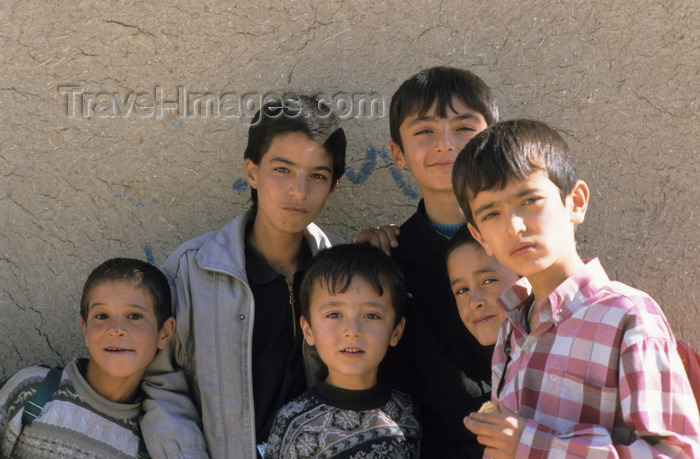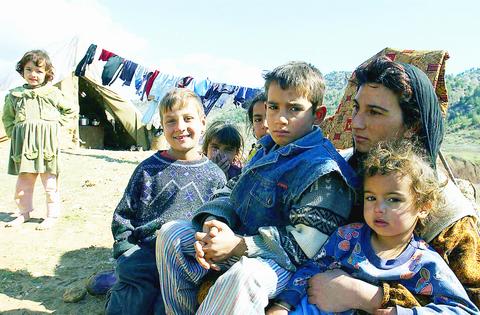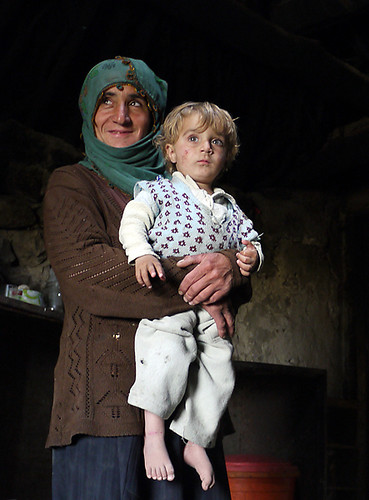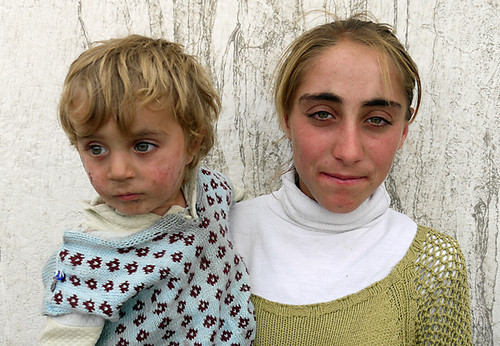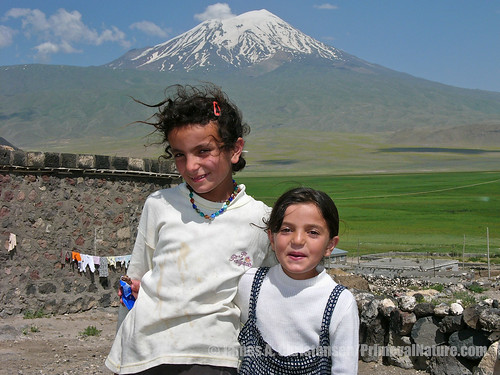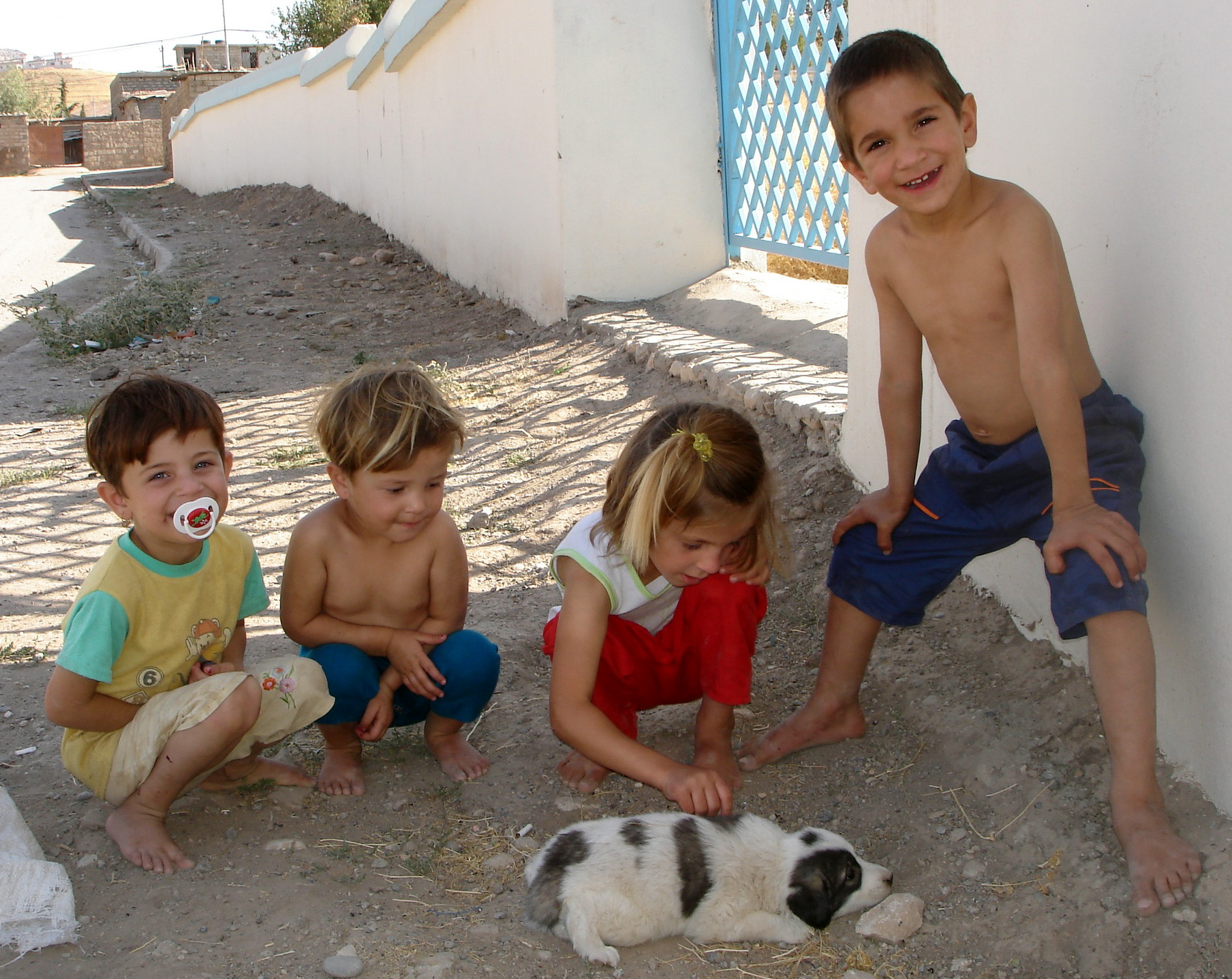


Notice: This is the official website of the All Empires History Community (Reg. 10 Feb 2002)
Kurdish ancestry: what is true, and what isn't? |
Post Reply 
|
Page <12345 25> |
| Author | ||
Ince 
Colonel 
Joined: 24-Dec-2009 Online Status: Offline Posts: 550 |
 Quote Quote  Reply Reply
 Topic: Kurdish ancestry: what is true, and what isn't? Topic: Kurdish ancestry: what is true, and what isn't?Posted: 20-Jan-2011 at 21:02 |
|
|
In his book Izady mentions the "Great Kurdish migration from southern Zagros", so when did this happen? Just that, some Anatolian Kurds could of come from the Zagros, according to Izady. I could not read the whole book as Google books only allows me to read a few pages.
  Edited by Ince - 20-Jan-2011 at 21:04 |
||
 |
||
Ince 
Colonel 
Joined: 24-Dec-2009 Online Status: Offline Posts: 550 |
 Quote Quote  Reply Reply
 Posted: 20-Jan-2011 at 19:33 Posted: 20-Jan-2011 at 19:33 |
|
|
I still believe that Northern Kurds are more Scythian influenced then Median. Why do some Kurds believe Corduene was a Scythian kingdom?
|
||
 |
||
MediaWarLord 
Consul 
Joined: 28-Nov-2010 Online Status: Offline Posts: 354 |
 Quote Quote  Reply Reply
 Posted: 20-Jan-2011 at 09:51 Posted: 20-Jan-2011 at 09:51 |
|
|
A Scythian king, Madya, conquered and ruled the Median Empire from c. 653-625 BCE. That was even before the Medes (Cyaxares) destroyed the Assyrian Empire (621 BCE). Cyaxares (he was a Mede) did that because an Assyrian king, Ashurbanipal, killed Phraortes. Phraortes was the father of Cyaxares. Cyaxares revenged the death of his father. Even before Phraortes was killed a Scythian king, Madya, ruled over Media. That means that Scythians also were in eastern Kurdistan (Iranian Kurdistan). They lived together with the Medes. So not only northern Kurds have some Scythian blood, but also the eastern Kurds. So all Kurds have Scythian blood. But not only Scythian blood, but also the Median one and the blood of other Indo-European tribes in Kurdistan. Do you remember the Mannaeans? The Mannaeans built Ecbatana, early capital of the Medes. When that happened the Scythians lived already together with the Medes in eastern Kurdistan. The Medes annexed the land of the Mannaeans and the Mannaean people. Mannaeans were not Indo-European. This means that the Medes (and Scythians) mixed already with the aboriginal people of Kurdistan n the early times, even before the collapse of the Assyrian Empire. But it´s all started with the Medes. So the Medes were the founding fathers of the Kurds. All Kurdish intellectuals and historians are saying that Kurds are the Medes. They're right! Edited by MediaWarLord - 20-Jan-2011 at 10:18 |
||
 |
||
Ince 
Colonel 
Joined: 24-Dec-2009 Online Status: Offline Posts: 550 |
 Quote Quote  Reply Reply
 Posted: 20-Jan-2011 at 08:27 Posted: 20-Jan-2011 at 08:27 |
|
|
Some areas of Central Kurdistan was likely Median, but what about Northern Kurds? They are likely descendeds of the Sycthians.
I also believe Northern Kurds are also descend from other Iranian tribes that had settled in Anatolia and eventually became Kurds. Kingdoms such as the Cappadocia and other iranic presences in Anatolia. Briton unearths Herodotus' lost city of the MedesAn archaeologist's model brings history to life
By Simon de Bruxelles
< ="text/">div#related-article-links p a, div#related-article-links p a:visited { color: rgb(0, 102, 204); }
|
||
 |
||
MediaWarLord 
Consul 
Joined: 28-Nov-2010 Online Status: Offline Posts: 354 |
 Quote Quote  Reply Reply
 Posted: 19-Jan-2011 at 23:03 Posted: 19-Jan-2011 at 23:03 |
|
|
I think Scythians and the Medes lived together, because a Scythian king, Madya conquered and ruled the Median Empire from c. 653-625 BCE.
The father of Phraortes was Diyako. He was a Mannaean provincial governor. The original homeland of Mannaeans was situated east and south of the Lake Urmia, near Mehabad, eastern Kurdistan.
Under HIS rule Ecbatana (Hamadan) was built. So the Mannaeans built Ecbatana. And they came from the Lake Urmia region, near Mehabad (eastern Kurdistan !!! ). The Medes annexed those Mannaeans.
 Edited by MediaWarLord - 19-Jan-2011 at 23:36 |
||
 |
||
MediaWarLord 
Consul 
Joined: 28-Nov-2010 Online Status: Offline Posts: 354 |
 Quote Quote  Reply Reply
 Posted: 19-Jan-2011 at 22:30 Posted: 19-Jan-2011 at 22:30 |
|
|
The royal tomb of Phraortes ( 675- 653 BC ). The father of Cyaxares. He was Killed by the king of Assyria
It's near Hamadan, Kurdish city in eastern Kurdistan. The tomb of his son is near a southern Kurdish city Silemani. The Medes came from the east, defeated the Assyrians and settled in Kurdistan. Period !!!
Tomb of Phraortes (c. 665 - 633 BC, killed by Ashurbanipal). Hamadan, Kurdistan.
Tomb of Cyaxares (r. 625 - 585 BC, legendary King destroyed Assyria) . Silemani, Kurdistan.
Edited by MediaWarLord - 19-Jan-2011 at 23:07 |
||
 |
||
MediaWarLord 
Consul 
Joined: 28-Nov-2010 Online Status: Offline Posts: 354 |
 Quote Quote  Reply Reply
 Posted: 19-Jan-2011 at 22:23 Posted: 19-Jan-2011 at 22:23 |
|
|
There is also another Median royal tomb in Kur-u Kich, 25 km away from the royal tom of Cyaxares!
Edited by MediaWarLord - 19-Jan-2011 at 22:33 |
||
 |
||
MediaWarLord 
Consul 
Joined: 28-Nov-2010 Online Status: Offline Posts: 354 |
 Quote Quote  Reply Reply
 Posted: 19-Jan-2011 at 22:02 Posted: 19-Jan-2011 at 22:02 |
|
Even Cyaxares is buried in S. Kurdistan. How much evidence do you need?
Edited by MediaWarLord - 19-Jan-2011 at 22:46 |
||
 |
||
Ince 
Colonel 
Joined: 24-Dec-2009 Online Status: Offline Posts: 550 |
 Quote Quote  Reply Reply
 Posted: 19-Jan-2011 at 20:30 Posted: 19-Jan-2011 at 20:30 |
|
|
I find rather interesting
Sources: The Kurds, A Concise Handbook, By Dr. Mehrdad R. Izady, |
||
 |
||
Ince 
Colonel 
Joined: 24-Dec-2009 Online Status: Offline Posts: 550 |
 Quote Quote  Reply Reply
 Posted: 19-Jan-2011 at 20:10 Posted: 19-Jan-2011 at 20:10 |
|
|
One of the best Kurdish songs released recently.
Song is in Turkish, its one of fav songs and the Singer is Kurdish and was born in my city. Gorani Kurds, love this song!! Edited by Ince - 19-Jan-2011 at 20:41 |
||
 |
||
Ince 
Colonel 
Joined: 24-Dec-2009 Online Status: Offline Posts: 550 |
 Quote Quote  Reply Reply
 Posted: 19-Jan-2011 at 20:03 Posted: 19-Jan-2011 at 20:03 |
|
 |
||
Ince 
Colonel 
Joined: 24-Dec-2009 Online Status: Offline Posts: 550 |
 Quote Quote  Reply Reply
 Posted: 18-Jan-2011 at 16:18 Posted: 18-Jan-2011 at 16:18 |
|
Could you please give more details on your thoughts? |
||
 |
||
Ramyar 
Immortal Guard 
Joined: 13-Jan-2011 Online Status: Offline Posts: 6 |
 Quote Quote  Reply Reply
 Posted: 18-Jan-2011 at 15:50 Posted: 18-Jan-2011 at 15:50 |
|
|
Well , after reading most of this topic I conclude the fallowing :
This topic is something I call a blind Patriot vs the facts . Remember : in History only facts and neutral Psychology counts , nothing else ! and since this rule is not being followed here , I bet that this topic is going to reach even further then 30 pages without even coming to a proper conclusion . Edited by Ramyar - 18-Jan-2011 at 15:51 |
||
 |
||
Ince 
Colonel 
Joined: 24-Dec-2009 Online Status: Offline Posts: 550 |
 Quote Quote  Reply Reply
 Posted: 17-Jan-2011 at 12:50 Posted: 17-Jan-2011 at 12:50 |
|
|
Kurdish tribes
Their is large Laki tribe South Western Kurdistan in Anatolia, did not know that.  Edited by Ince - 17-Jan-2011 at 12:54 |
||
 |
||
Ince 
Colonel 
Joined: 24-Dec-2009 Online Status: Offline Posts: 550 |
 Quote Quote  Reply Reply
 Posted: 17-Jan-2011 at 10:46 Posted: 17-Jan-2011 at 10:46 |
|
We do know that Persians and Medes were both located around North Iran in the early days and likely, like I mentioned before, the unions were likely made up of natives and the Iranic tribes and eventually the Iranic identiy became more dominant. Iranic tribes of Medes and Persians likely came threw the Caucasus region rather then the east. and maybe they might of incroperated some people even before arriving to Iran. Kurds of Iran are very close to Persians and Lors in mtDNA and close to North Iran and Caucasians. Kurds of Iran, are genetically closer to Iranians of Iran then to Kurds of Anatolia, because of the vast distance and lack of gene flow and also the political states and dynasty that have ruled each region. Regradless they are still Kurds.   Edited by Ince - 17-Jan-2011 at 10:48 |
||
 |
||
Ince 
Colonel 
Joined: 24-Dec-2009 Online Status: Offline Posts: 550 |
 Quote Quote  Reply Reply
 Posted: 16-Jan-2011 at 22:01 Posted: 16-Jan-2011 at 22:01 |
|
|
Early Medes were likely a mix of Natives and iranian tribes and eventually the Iranian part became more dominant.
Edited by Ince - 16-Jan-2011 at 22:04 |
||
 |
||
MediaWarLord 
Consul 
Joined: 28-Nov-2010 Online Status: Offline Posts: 354 |
 Quote Quote  Reply Reply
 Posted: 16-Jan-2011 at 15:02 Posted: 16-Jan-2011 at 15:02 |
|
Maybe the Medes had Hg 'F', Hg 'K', Hg 'I' and Hg 'J2' ( Hg IJK -> HgIJ ) and Hg 'R' in them. And Kurds are not pure Medes, they're partly Hurrian. Maybe the Hurrians also belonged to the Hg 'F', Hg 'I', 'J2', 'K', 'G', 'R' etc. But nobody knows which Hg is Median and which Hg is Hurrian. It's impossible, because haplogroups are much older than the Medes, Hurrians and other ancient people.
Like modern people, ancient people also belonged to more haplogroups. And not just 1 haplogroup. Haplogroups doesn't mean anything. There're no races! There is just 1 race, the human race.
And the fact is that we are mostly connected with the Medes than to other people. Edited by MediaWarLord - 16-Jan-2011 at 15:14 |
||
 |
||
Ince 
Colonel 
Joined: 24-Dec-2009 Online Status: Offline Posts: 550 |
 Quote Quote  Reply Reply
 Posted: 15-Jan-2011 at 19:08 Posted: 15-Jan-2011 at 19:08 |
|
Heres the thing, Kurds only claim they are the descendeds of the Medo-Scythians that were in Kurdistan, which they are. I do not think genetic is the basis of ethnicity, take away language and culture and the even Kurdish religion of Ezidi and all you are left with is a empty shell, then you are no longer a Kurd. Same with Persians,Lors,Gilaks,Talysh,Ossetiens,Mazandaranis they all carry the legacy of the their ancestors and no matter how much of small genetic imprint they have they are still Iranic. |
||
 |
||
Putty19 
Samurai 
Joined: 21-May-2010 Online Status: Offline Posts: 111 |
 Quote Quote  Reply Reply
 Posted: 15-Jan-2011 at 17:16 Posted: 15-Jan-2011 at 17:16 |
|
Yes, I'm basing this on genetic grounds, I mean afterall, we're talking about ancestors here, language and culture can be adopted which happens all the time. Anyways, I'm gonna stop arguing here, this whole thing looks like a turning circle and I think I'm done proving my point. |
||
 |
||
Ince 
Colonel 
Joined: 24-Dec-2009 Online Status: Offline Posts: 550 |
 Quote Quote  Reply Reply
 Posted: 15-Jan-2011 at 09:09 Posted: 15-Jan-2011 at 09:09 |
|
|
Then your assuming that genetics is the whole basis of ethnicity, Minor Iranic background? maybe on the genetic imprint, what about historical background, Cultural background,language? take all this into account as that is what shapes a nation. Kurds have a mixed background from various groups, many believe term Kurt comes from the Guti and they were not even natives and arrived late compared to others that were present. Because most of the Haplogroups groups Kurds carry are found around the sourounding people in does not mean that Kurds are pure natives of the land. Even on MTDNA Kurds show closer ties to Europe then to Caucasians.
Edited by Ince - 15-Jan-2011 at 09:11 |
||
 |
||
Post Reply 
|
Page <12345 25> |
| Forum Jump | Forum Permissions  You cannot post new topics in this forum You cannot reply to topics in this forum You cannot delete your posts in this forum You cannot edit your posts in this forum You cannot create polls in this forum You cannot vote in polls in this forum |
Copyright ©2001-2009 Web Wiz
This page was generated in 0.143 seconds.












 Printable Version
Printable Version Google
Google Delicious
Delicious Digg
Digg StumbleUpon
StumbleUpon Windows Live
Windows Live Yahoo Bookmarks
Yahoo Bookmarks reddit
reddit Facebook
Facebook MySpace
MySpace Newsvine
Newsvine Furl
Furl Topic Options
Topic Options

















